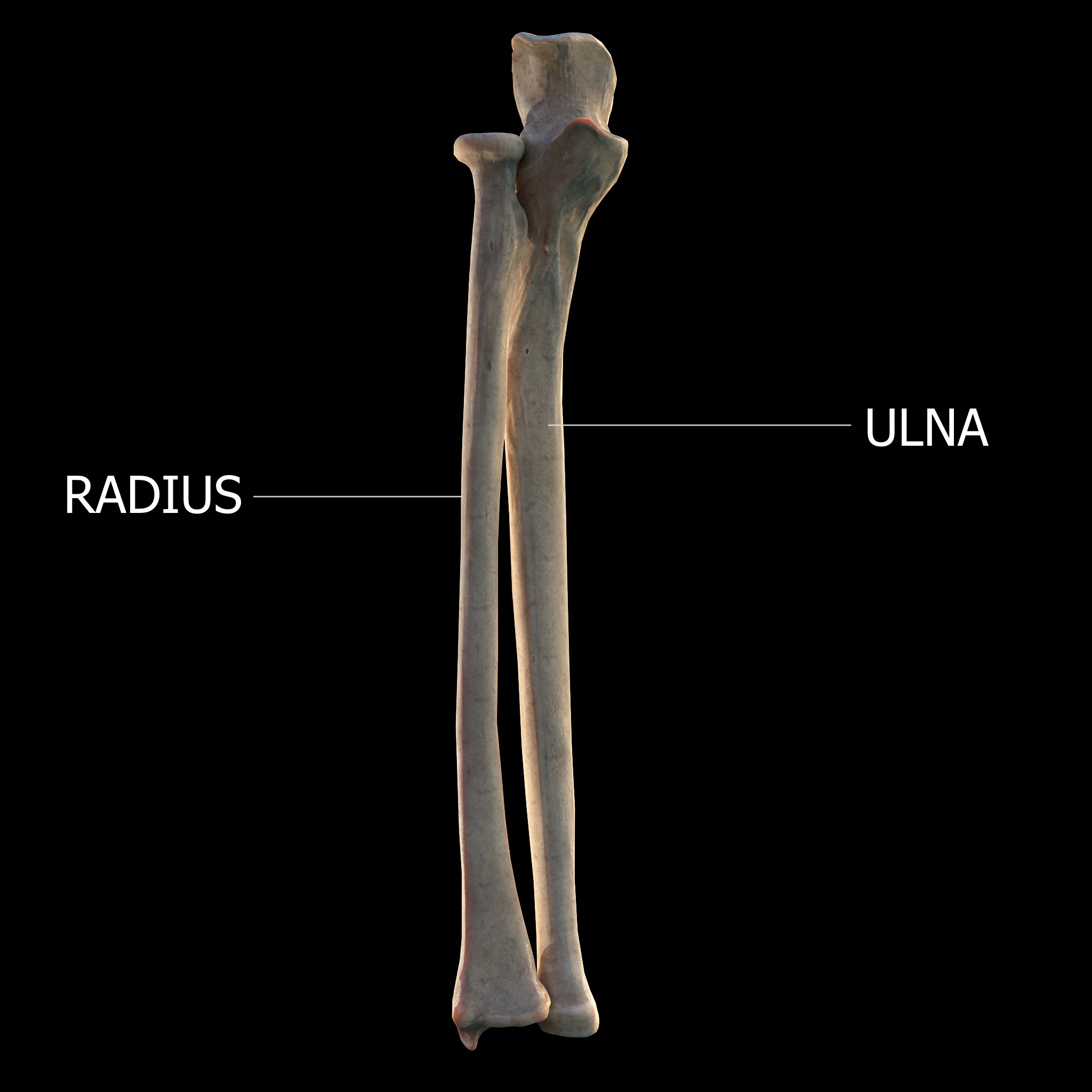
Answer
327.9k+ views
Hint: All of the bones and joints in the body are part of the skeletal system. Each bone is a complex living organ composed of numerous cells, protein fibres, and minerals. The skeleton serves as a scaffold, supporting and protecting the soft tissues that comprise the rest of the body.
Complete answer:
In most vertebrate animals, a bone is a rigid tissue that forms part of the skeleton. Bones protect the body's organs, produce red and white blood cells, store minerals, provide structure and support, and allow mobility. Bones have a complex internal and external structure and come in a variety of shapes and sizes. They are lightweight while remaining strong and hard, and they serve multiple functions.
The ulna is a long bone in the forearm that extends from the elbow to the smallest finger and is located on the medial side of the forearm when in anatomical position. It runs parallel to the radius, the forearm's other long bone. The ulna is typically longer than the radius, but the radius is thicker. As a result, the radius is considered to be the greater of the two.
The radius, also known as the radial bone, is one of two large bones in the forearm, the other being the ulna. It runs parallel to the ulna and extends from the lateral side of the elbow to the thumb side of the wrist. The ulna is typically longer than the radius, but the radius is thicker. As a result, the radius is considered to be the greater of the two. It is a long bone that is prism-shaped and has a slight longitudinal curve.

Thus, Ulna is longer than the radius.
Note: The ulna has a bony process near the elbow called the olecranon process, which is a hook-like structure that fits into the humerus's olecranon fossa. This prevents hyperextension and forms a hinge joint with the humeral trochlea. There is also a radial notch for the radius head and an ulnar tuberosity to which muscles attach. The radius is made up of a body and two extremities. The radius's upper extremity consists of a somewhat cylindrical head that articulates with the ulna and humerus, a neck, and a [[radial tuberosity]].
Complete answer:
In most vertebrate animals, a bone is a rigid tissue that forms part of the skeleton. Bones protect the body's organs, produce red and white blood cells, store minerals, provide structure and support, and allow mobility. Bones have a complex internal and external structure and come in a variety of shapes and sizes. They are lightweight while remaining strong and hard, and they serve multiple functions.
The ulna is a long bone in the forearm that extends from the elbow to the smallest finger and is located on the medial side of the forearm when in anatomical position. It runs parallel to the radius, the forearm's other long bone. The ulna is typically longer than the radius, but the radius is thicker. As a result, the radius is considered to be the greater of the two.
The radius, also known as the radial bone, is one of two large bones in the forearm, the other being the ulna. It runs parallel to the ulna and extends from the lateral side of the elbow to the thumb side of the wrist. The ulna is typically longer than the radius, but the radius is thicker. As a result, the radius is considered to be the greater of the two. It is a long bone that is prism-shaped and has a slight longitudinal curve.

Thus, Ulna is longer than the radius.
Note: The ulna has a bony process near the elbow called the olecranon process, which is a hook-like structure that fits into the humerus's olecranon fossa. This prevents hyperextension and forms a hinge joint with the humeral trochlea. There is also a radial notch for the radius head and an ulnar tuberosity to which muscles attach. The radius is made up of a body and two extremities. The radius's upper extremity consists of a somewhat cylindrical head that articulates with the ulna and humerus, a neck, and a [[radial tuberosity]].
Recently Updated Pages
Who among the following was the religious guru of class 7 social science CBSE

what is the correct chronological order of the following class 10 social science CBSE

Which of the following was not the actual cause for class 10 social science CBSE

Which of the following statements is not correct A class 10 social science CBSE

Which of the following leaders was not present in the class 10 social science CBSE

Garampani Sanctuary is located at A Diphu Assam B Gangtok class 10 social science CBSE

Trending doubts
Which are the Top 10 Largest Countries of the World?

In what year Guru Nanak Dev ji was born A15 April 1469 class 11 social science CBSE

A rainbow has circular shape because A The earth is class 11 physics CBSE

How do you graph the function fx 4x class 9 maths CBSE

Fill the blanks with the suitable prepositions 1 The class 9 english CBSE

In Indian rupees 1 trillion is equal to how many c class 8 maths CBSE

The Equation xxx + 2 is Satisfied when x is Equal to Class 10 Maths

Why is there a time difference of about 5 hours between class 10 social science CBSE

Difference between Prokaryotic cell and Eukaryotic class 11 biology CBSE




